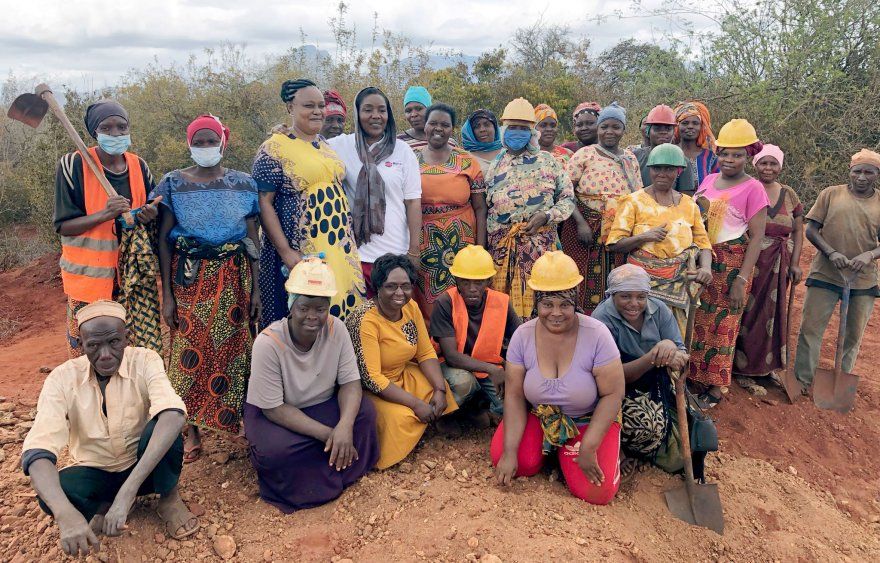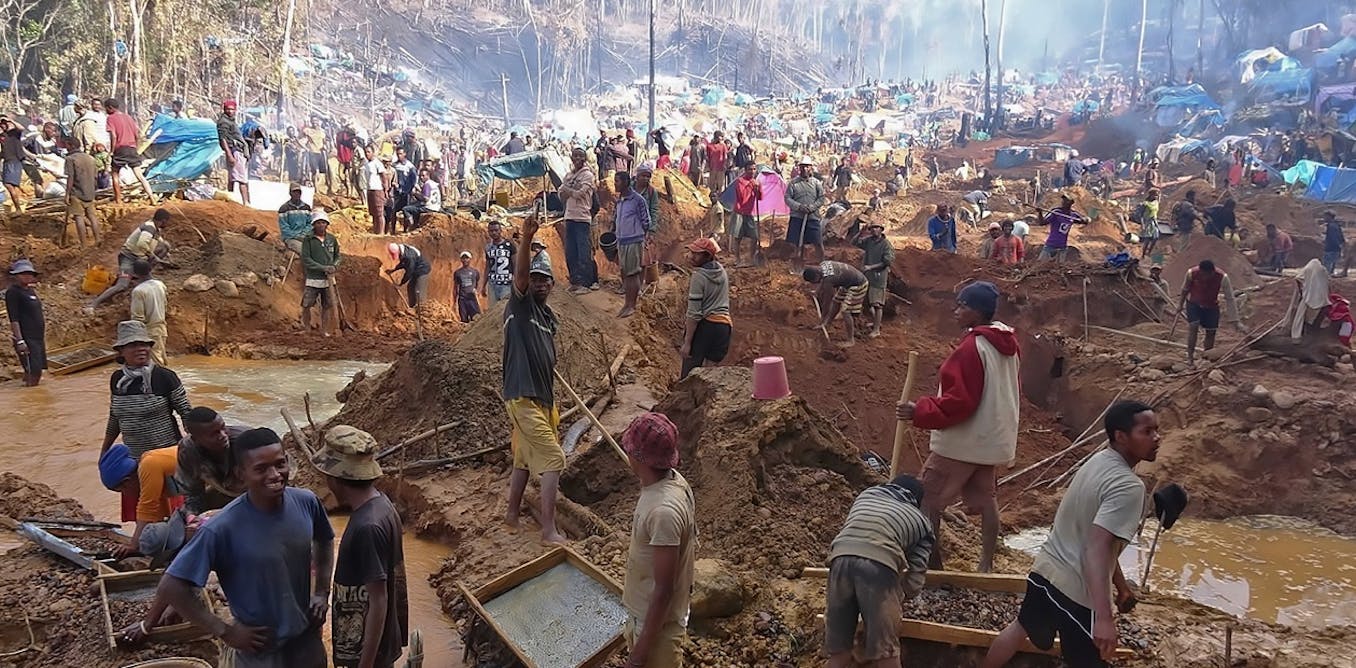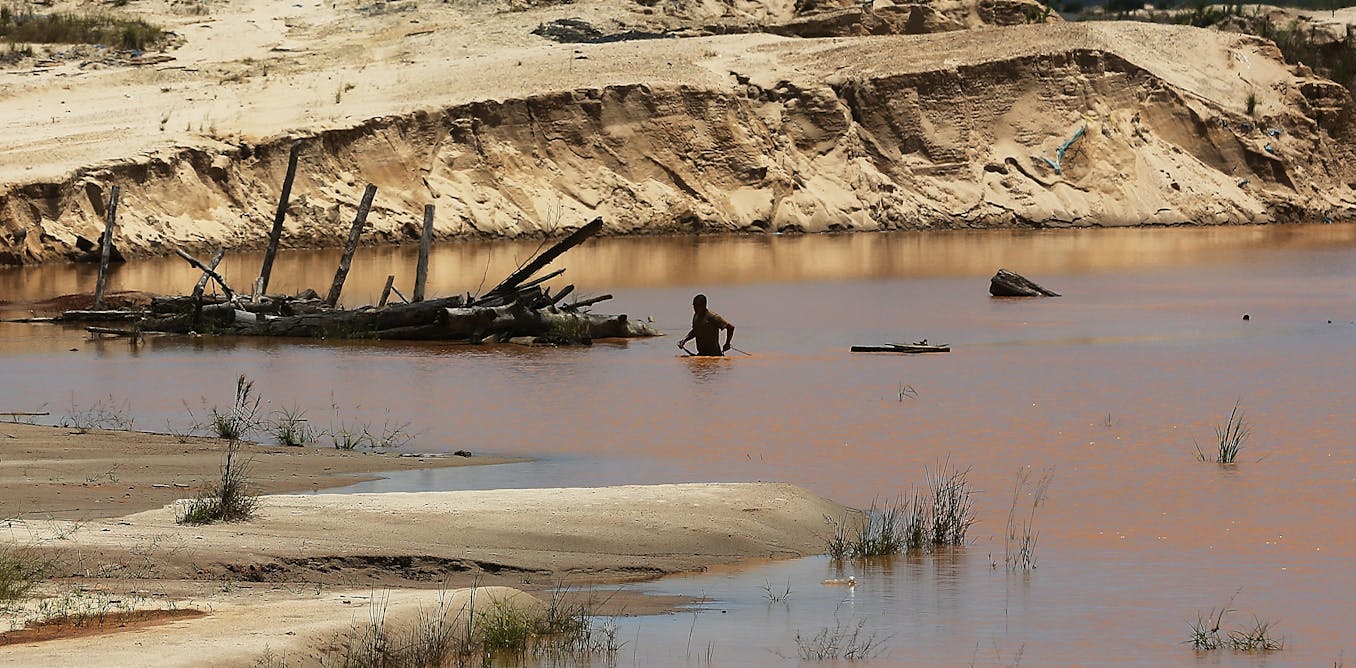
Artisanal mining - seeking solutions
The increasing focus on supply chains for the critical minerals used in green technologies has also brought the topic of artisanal mining to the fore. It remains a controversial and not well understood topic.
Summary: The increasing focus on supply chains for the critical minerals used in green technologies has also brought the topic of artisanal mining to the fore. It remains a controversial and not well understood topic. It's frequently portrayed in a negative way, with governments often describing it as "illegal mining", calling for it to be banned. But, it's not that simple. Most miners lack choices. As with other transitions there are solutions, but perhaps not the obvious ones.
Why this is important: This blog contains insights from Rob Karpati, from the Blended Capital Group. Rob is passionate about mining, especially finding practical solutions to artisanal mining. The team he works with believe that opportunities for extreme impact exist, requiring the development of an investment marketplace as well as a focus in rights in order to mitigate structural challenges.
The big theme: One of the big challenges in decarbonising our society relates to the supply of critical raw materials. This is not just about cost, it also covers where they are sourced from, how they are produced, and how can we manage and mitigate the inevitable negative impacts. Intrinsically tied up in this is the issue of mining. For many minerals we are going to need more mining (and mineral processing), not less. Which means we need to think deeply about what mining means for local communities, and how we can make mining more environmentally and socially sustainable.

The details
Summary of an article from The Conversation
Judith Verweijen, Fergus O'Leary Simpson and Peer Schouten: Mining and armed conflict threaten eastern DRC’s biodiversity in a complex web - Jan 2023
The Democratic Republic of Congo’s (DRC) conflict-affected eastern provinces are home to numerous protected areas. These areas host unique biodiversity and a range of threatened species, such as the okapi, forest elephant and mountain gorilla. They are also part of the Congo Basin rainforest, which is a crucial line of defence against climate change. The same protected areas overlap with globally significant deposits of minerals – including gold, coltan and cassiterite.
Mining is rampant in these areas, including in the Itombwe Nature Reserve, Maiko National Park and the Okapi Wildlife Reserve. Most of this mining is labour-intensive artisanal mining, which makes use of basic technologies. This destructive mining in conservation areas often happens under the protection of state and non-state armed actors, who take a portion of the revenues. The economic importance of mining makes it difficult to stop extraction in protected areas. Its a vicious circle.

Why this is important
For this blog, we have a different format. Nearly all of it from here down comes from a new colleague, Rob Karpati, from the Blended Capital Group. Rob is passionate about mining, especially finding practical solutions to artisanal mining. The team he works with believe that opportunities for extreme impact exist, requiring the development of an investment marketplace as well as a focus in rights in order to mitigate structural challenges.
He will be writing a series of blogs on the topic over the coming months. In this first one he sketches out its global scale and explains how the common narrative misses the mark (my words not his). We have only lightly edited his contribution as we want Rob's voice to come through.
In the interests of keeping our compliance advisor sane, this is not an endorsement of Rob, or The Blended Capital Group. As always, we aim to inform, educate and stimulate debate by challenging popular misconceptions. In that spirit, over to Rob.
There are 45 million artisanal miners working in over 80 countries. These workers go by many names, including small scale miners, zama zama’s in South Africa, and garimpeiros in Brazil. They are also inappropriately called illegal miners.
This is the first in a series of articles on artisanal scale mining (ASM). There is limited awareness around what this huge sector looks like. We will gradually describe realities on the ground, the local and value chain wide economic importance of the sector, and some implications of artisanal mining on the energy transition, on sustainable development, and on the environment. Future articles will also describe formalisation approaches that can create extreme impact on the dignity as well as the productivity of work in the sector.
Artisanal mining has a broad scope. A variety of critical minerals that are essential for net zero are artisanally mined, including close to 20% of global cobalt mining as well as significant copper and manganese tonnage. There is significant mining of precious metals and stones, including 20% of worldwide gold mining and 80% of global sapphire mining. Mining also extends into the sand, gravel and stone that is needed for construction.

ASM is generally found in the global south, with significant numbers of miners across Africa, Asia and Latin America. China and India have the most miners, but there are several African countries with 500K-2M miners, along with significant numbers in Latin America. Including the families of the miners, there are 200M+ people directly supported by ASM, which is the equivalent of 2.5% of the global population. There is a further 134-269M people estimated by the World Bank who sell food, equipment, clothing and shelter to the miners. The largest block of artisanal miners, an estimated 15-20M individuals, focus on gold.
Narratives often oversimplify the realities of ASM. The sector reflects local socio-economic contexts, which makes it highly diverse. A best-case scenario has artisanal miners having dignified work and opportunities for fair compensation. At worst, ASM includes child and forced labor, unsafe conditions, and vulnerabilities leading to corruption. Individual countries and regions need to be analysed in order to understand relevant dynamics. Context is an important part of this analysis, in order to understand what opportunities and risks are in play.
Data is generally lacking about the realities of ASM. Although there are aggregate estimates on numbers of miners and quantities of minerals, specific information on the realities of the sector are often lacking. As appropriate standards and best practices are defined for ASM formalisation, data gathering will be important in order to understand current realities, the implications of potential policy and practice approaches, as well as the baseline for shifting outcomes over time.
As with all forms of mining, there are also environmental considerations with ASM that include potential air, water and soil contamination. One specific concern is the use of mercury in gold mining, which is a highly toxic contaminant that affects the health of miners as well as those in nearby communities.

Major challenges are that rights are uneven and access to financing is lacking. Artisanal miners are often deemed illegal due to policy decisions. The phrase itself is inappropriate insofar as most miners are not corrupt, they simply gravitate to what work is possible while trying to increase their dignity through work. Being illegal increases the vulnerability of miners to corruption, unsafe conditions and poverty. Lack of financing access results partially because the work is often deemed illegal, but more broadly because a standards driven investment marketplace with defined best practices has not matured.
Investment driven formalisation is effective when it is collaborative, based on the voices and realities of local miners. Formalisation in this context means a transition to predictable legally recognized and financed business relationships, where roles of miners in the front-end of value choices is clearly defined as well as fair. Cooperatives are a natural example of what formalisation looks like, organising miners in ways that give them voice, enhancing access to financing while providing a baseline for investment and training.
Given the importance of ASM in many countries, formalisation is also a mechanism for enabling sustainable development on a broader basis, while also increasing supply of minerals that are critical for the energy transition. There are limited examples of successful formalisation at this point, all of which tend to focus on local solutions for local problems. Developing flexible frameworks that apply global standards in locally targeted ways is a tremendous opportunity for increasing scope of investment that delivers formalization.
Something a little more bespoke?
Get in touch if there is a particular topic you would like us to write on. Just for you.
Contact us
Please read: important legal stuff.


